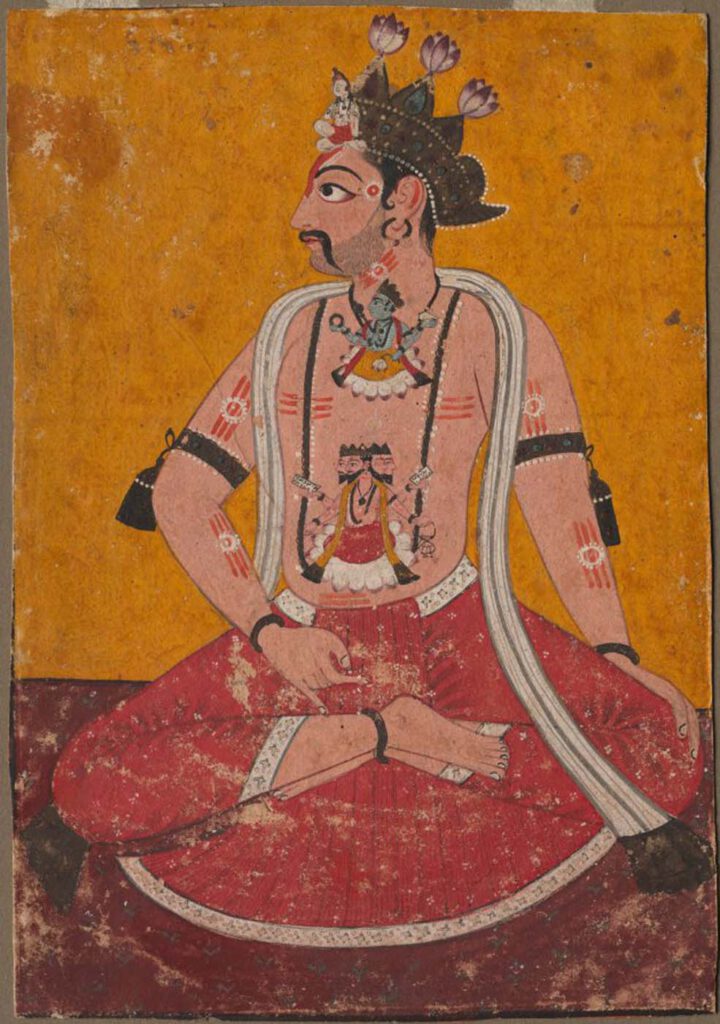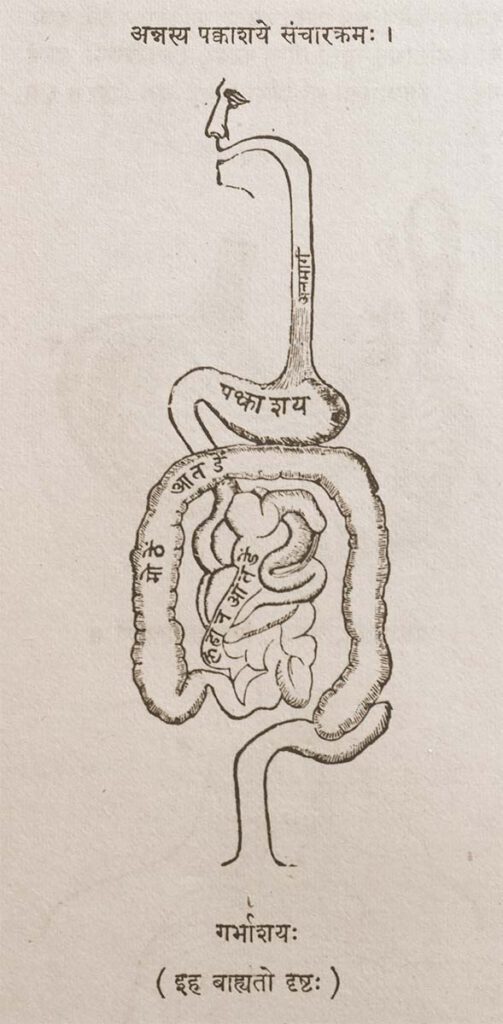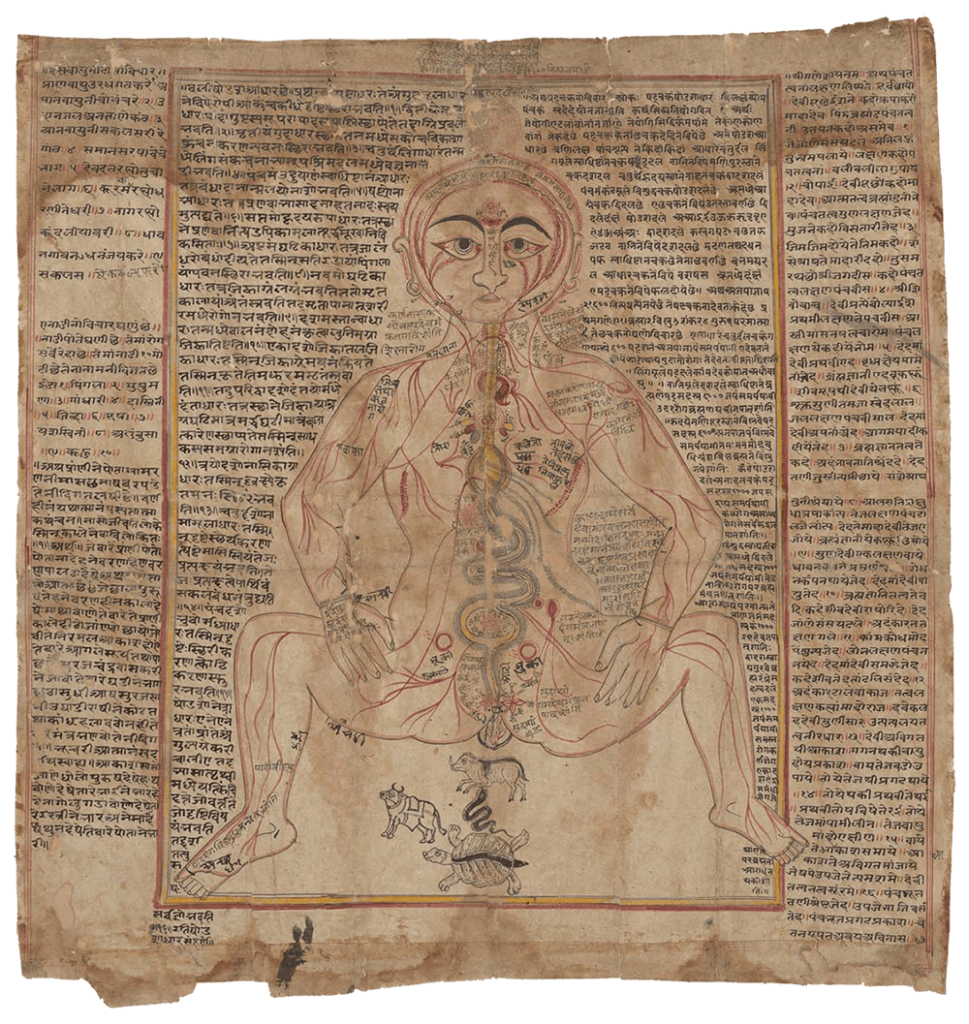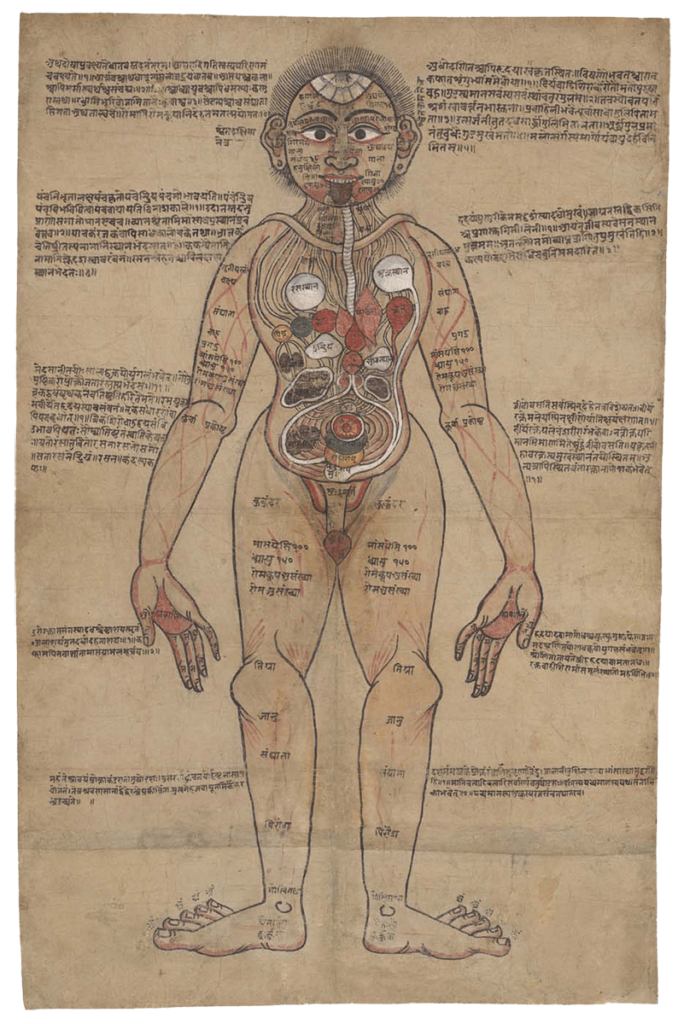The Navel Cakra (maṇipūraka) with Intestines

The Navel Cakra (maṇipūraka) with Intestines Provenance: Printed book, Bihar, undated [1903]. Anglicized Bibliographic data The Ṣaṭcakranirūpaṇacitra with the Bhāṣya and Bhāṣāṭīkā by Svāmihaṃsasvarūpa. Bihar: Trikutivilas Press Muzaffarpur. Sanskrit Title and Author in Devanagari font स्वामिहंसस्वरूपकृतम्षट्चक्रनिरूपणचित्रम् । भाष्यसमलंकृतं भाषाटीकोपेतञ्च Sanskrit Title and Author in Roman font Svāmihaṃsasvarūpakr̥tamṢaṭcakranirūpaṇacitram: bhāṣyasamalaṃkr̥taṃ bhāṣāṭīkopetañ ca Source: Wellcome Library, manuscript number, […]
Rāja Mandhata

Rāja Mandhata Nurpur, Himachal Pradesh, India c. 1690–1700. Source: Cleveland Museum of Art CC0 1.0 Universal (CC0 1.0) – The yogic body was configured in different ways by various traditions. The abdomen was thought to be the seat of fire in the body, and it could be stimulated by the practice of physical yoga postures, […]
Food’s Course of Movement in the Intestines (engraving)

Food’s Course of Movement in the Intestines (engraving) Provenance: Printed Book, page 44. Anglicized Bibliographic data The Śārṅgadhara-saṃhitā by Paṇḍit Śārṅgadharāchārya, son of Paṇḍit Dāmodara with the commentary Aḍhamalla’s Dīpikā and Kāśīrāma’s Gūḍhārtha-Dīpikā. Ed. Paṇḍitaparaśurāmaśāstri. Bombay: Pāndurang Jāwajī, Nirṇaya-Sāgar Press, 1931. Sanskrit Title and Author in Roman font śrīmatpaṇḍitadāmodarasūnu-śārṅgadharācāryaviracitā . śārṅgadharasaṃhitā . bhiṣagvarāḍhamallaviracitadīpikā-paṇḍitakāśirāmavaidyaviracita-gūḍhārthadīpikābhyāṃ ṭīkābhyāṃ saṃvalitā […]
Indian anatomical painting

Indian anatomical painting Circa eighteenth century, western India. An old-Gujarati manuscript (circa 1900?). (Wellcome MS Indic d 74. Photo Wellcome Library, London.) Source: Wellcome Collection CC BY-NC-SA 4.0 – Premodern anatomical images in India were influenced by Persian drawings on anatomy, particularly during the Mughal dynasty’s reign in north India from the sixteenth to eighteenth […]
A human anatomical figure

A human anatomical figure Drawing, Nepalese, ca. 1800 (?) Source: Wellcome Library no. 574912iWellcome Collection. Public Domain Mark. – Although India has thousands of manuscripts of premodern medical texts, only a handful contain anatomical illustrations. Text was crucially important for transmitting medical teachings. Figure 1 combines text with an illustration of the body and its […]
